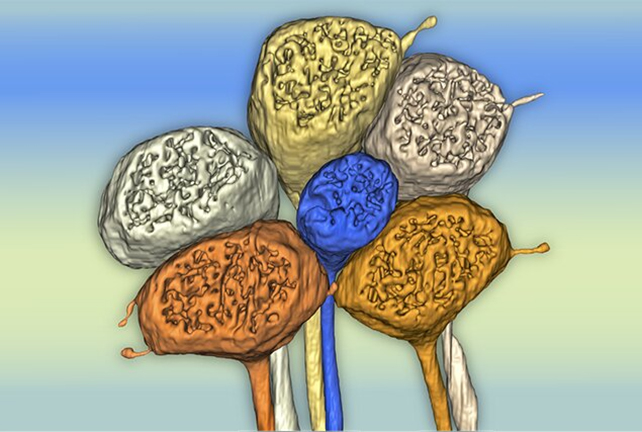New research has uncovered an intriguing advantage human vision has over that of our monkey cousins. Thanks to small differences in the structure of the retina, our eyes are able to perceive a greater range of blue tones.
The findings, reported by researchers from the University of Washington, the Medical University of Vienna, and the University of Sydney, shed light on how human beings have evolved since diverging from ancient monkey lineages some 25 million years ago.
"Here, we compare the synaptic connectome for a color-coding circuit in the human retina with the comparable circuits in both marmoset and macaque monkeys," the researchers write in their published paper.
"We discover a circuit in humans that is absent in marmosets and show further that for the human retina synaptic motifs do not follow the canonical architecture established in macaque monkeys."
The researchers focused on a part of the eye called the fovea, which forms a dimple in the retina at the back of the eye that's packed with light sensitive cells shaped like tiny cones. These cones detect waves of light, and the fovea is crucial for picking out detail (when reading or driving, for instance).
Different types of cones are designed to process different waves of light – either short, medium, or long. These cones work together in different combinations to create the light tasting neural circuits which the brain processes as color.

The researchers found that connections between short-wave cones with long and middle-wave cones that exist in humans, a circuit sensitive to blue light, are mostly missing in marmosets and macaques. There were other minor variations too in the neural circuitry at work.
"Our results may help to explain why some aspects of human color perception are not well predicted from physiological studies of the macaque monkey visual system," write the researchers.
As they're so closely related to us, monkeys are often used in sight studies, but this new research adds certain caveats that should be considered when trying to apply the results of these studies to human beings.
Exactly how and why this difference has come about isn't explored in this particular paper, but the researchers have some ideas. Monkeys tended to stay up in the trees, for example, whereas humans explored open land – it may be that certain sight features evolved to better find food and stay alive in these two scenarios.
The results of this study also add some interesting detail to what we know about how we process visual information and send it to the brain – and looking at the eye at even smaller scales should bring about further revelations.
"Our results predict that early-stage chromatic signals are distinct in the human retina and imply that solving the human connectome at the nanoscale level of synaptic wiring will be critical for fully understanding the neural basis of human color vision," write the researchers.
The research has been published in PNAS.
